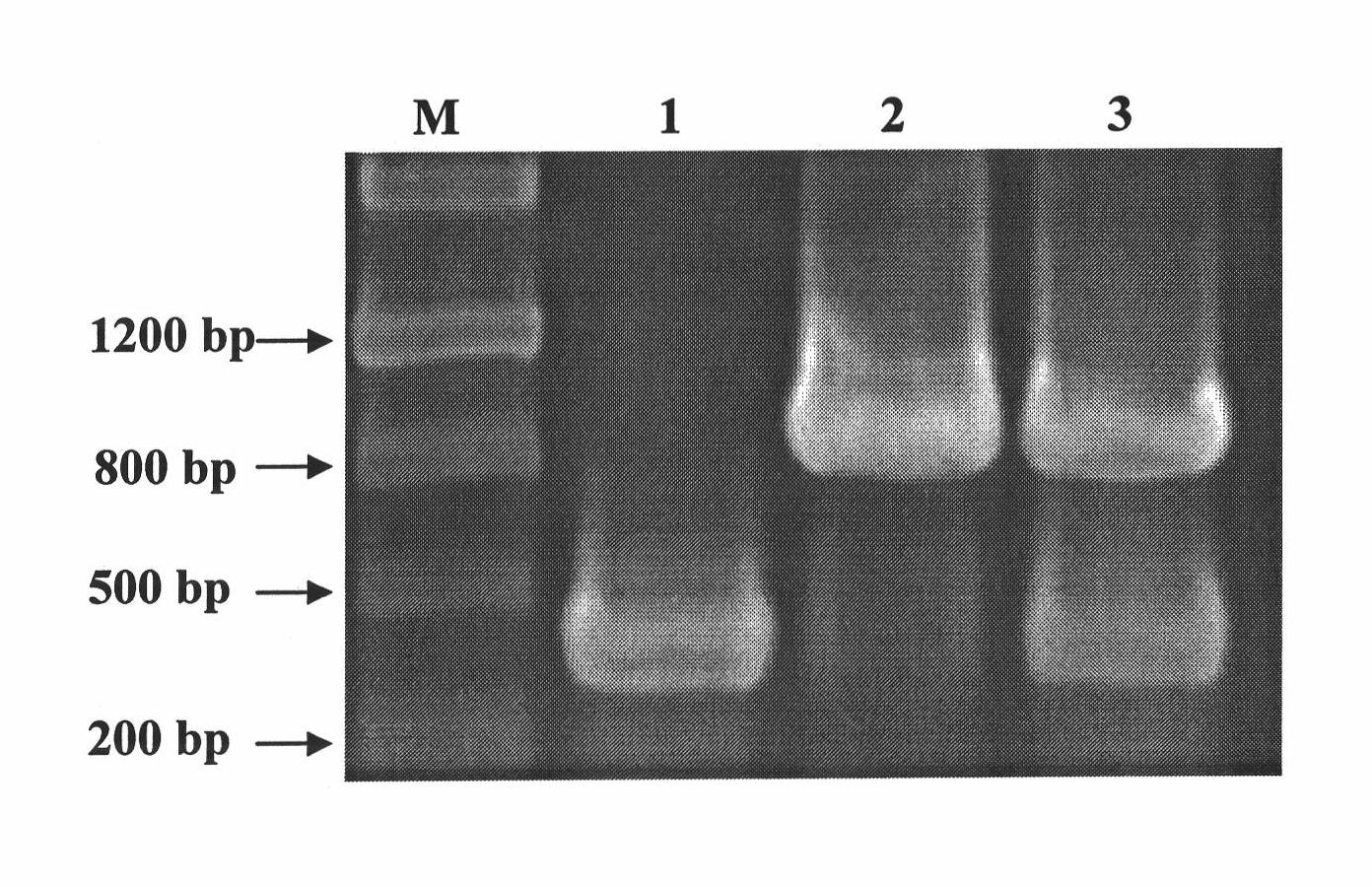Method for rapidly identifying tomato yellow leaf curl virus and papaya leaf curl China virus infecting tomato
A technology for tomato yellow leaf curl and leaf virus, applied in biochemical equipment and methods, methods based on microorganisms, measurement/inspection of microorganisms, etc., can solve problems that are difficult to distinguish and have not been seen, and achieve rapid identification Effect
- Summary
- Abstract
- Description
- Claims
- Application Information
AI Technical Summary
Problems solved by technology
Method used
Image
Examples
example 1
[0036] The mixed samples of tomatoes infected with the known tomato yellow leaf curl virus and the Chinese papaya leaf curl virus and the tomato samples respectively infected with the tomato yellow leaf curl virus and the Chinese papaya leaf curl virus were used as detection objects, and the healthy tomato samples were used as the negative control.
[0037] 1. Primer design:
[0038] (1) According to NCBI ( http: / / www.ncbi.nlm.nih.gov / sites / entrez? db=nucleotide ) design primers for tomato yellow leaf curl virus nucleic acid sequence (GU111505) and Chinese papaya leaf curl virus nucleic acid sequence (EU874386), the primer sequences are as follows:
[0039] PA_F362: 5`-GCACCACTCACATTCTCGGAAAC-3`
[0040] TY_F833: 5`-GGTCTACACGCTTACGCCTTATT-3`
[0041] PATY_R: 5`-TTCCATCCGAACATTCAGGCAGC-3`
[0042] (2) Primer pairing and the size of the amplified target nucleic acid band are as follows:
[0043] Primer combination Detection virus name Target fragment size
[0044] PA_F36...
PUM
 Login to View More
Login to View More Abstract
Description
Claims
Application Information
 Login to View More
Login to View More - R&D
- Intellectual Property
- Life Sciences
- Materials
- Tech Scout
- Unparalleled Data Quality
- Higher Quality Content
- 60% Fewer Hallucinations
Browse by: Latest US Patents, China's latest patents, Technical Efficacy Thesaurus, Application Domain, Technology Topic, Popular Technical Reports.
© 2025 PatSnap. All rights reserved.Legal|Privacy policy|Modern Slavery Act Transparency Statement|Sitemap|About US| Contact US: help@patsnap.com

